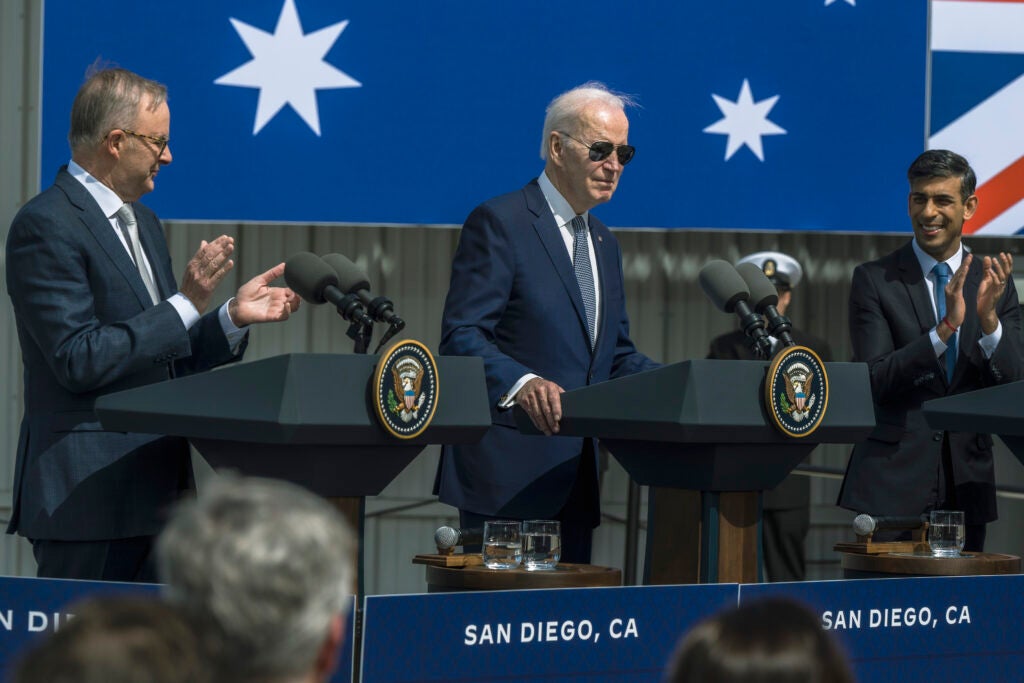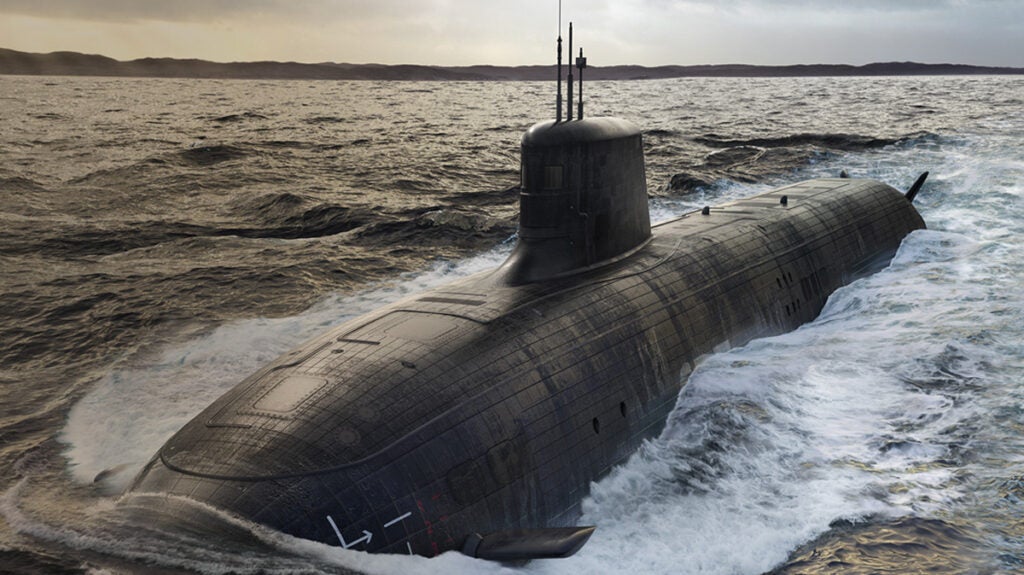Australian AUKUS Task Force Head: New Submarine Design About 70% Mature
The head of Australia’s AUKUS task force said on Tuesday that the design of the future nuclear-powered attack submarine to be built in Australia is “about 70 percent mature”, following the joint announcement by Australian Prime Minister Anthony Albanese, UK Prime Minister Rishi Sunak and US President Joe Biden detailing the three countries’ roadmap to jointly develop a new class of nuclear-powered attack submarines.
In an interview on the Australian Broadcasting Corporation’s 7.30 current affairs program, Vice Admiral Jonathan Mead said that the end of production of the American Virginia class attack submarine in the 2040s meant that building them in Australia or continuing to procure them would not be a “sustainable capability”.
Vice Admiral Mead said that Australia was capable of building the SSN-AUKUS attack submarine, saying that it was “actually quite mature in the design, it’s about 70 per cent mature”. “The US will incorporate key weapons and combat systems into that submarine. The UK are very much looking forward to that.”
When asked about the safety of the reactors, Vice Admiral Mead said that the Royal Australian Navy intended to “emulate” the “unblemished” safety record of United States Navy and Royal Navy nuclear submarines. He added that the nuclear reactors of the SSN-AUKUS submarines would be “welded, shielded and sealed” for their thirty-year lifespan.
Vice Admiral Mead’s interview followed Monday’s joint announcement in San Diego of a three-phrase “optimal pathway” to building the SSN-AUKUS class of submarines in Australia.

In the program’s first phrase, US submarines will increase their visits to HMAS Stirling, the home base of Australian submarines near Perth, starting this year, with UK submarine visits to start in 2026. Australian sailors will increasingly embed in US and UK submarine forces and nuclear power schools, with Vice Admiral Mead saying that Australian sailors and officers were now undergoing nuclear power training, and that work was ongoing to “embed” Australian workers in US shipyards. Additionally, Australia is to begin building up its facilities and infrastructure to support Australian, American and British submarines.
Once the infrastructure is ready, the US and UK plan to begin regular rotational deployments as early as 2027 under what is currently known as Submarine Rotational Forces West, with up to five attack submarines from both nations to be deployed. In addition to accelerating “the development of the Australian naval personnel, workforce, infrastructure and regulatory system”, Submarine Rotational Forces West aims to bolster deterrence through the greater forward presence of US and UK attack submarines in the Pacific.
Phase two of the program will see the US sell between three and five Virginia class attack submarines to Australia in the 2030s. According to American officials, the sale will ensure that a capability gap does not appear once the current Australian Collins class diesel-electric attack submarines are retired in the 2030s. It will also help build and in-service operational knowledge base around operating nuclear-powered boats.
The third phase will see the construction of the SSN-AUKUS by both the United Kingdom and Australia. SSN-AUKUS is based on the UK’s SSN(R) design intended to replace the Royal Navy’s Astute class attack submarines, featuring a vertical launch system for land attack missiles, and technology from the American Virginia class.
Delivery of the first UK-built SSN-AUKUS to the Royal Navy is expected to take place in the late 2030s, with the first Australian-built SSN-AUKUS out of a planned order of eight is expected to be delivered to the Royal Australian Navy in the early 2040s.
Australian Defence Industry Minister Pat Conroy has said that the massive program will be managed by a dedicated government agency, telling the Australian Broadcasting Corporation that Canberra has “actually learned” lessons from previous procurement projects like the Collins class. While the Australian government has not provided any cost projections more detailed than an average 0.15 percent of Australian GDP a year “averaged over the life of the program”, estimates of between $268 billion and $368 billion Australian dollars (approximately 190-257 billion US dollars) through 2055 have been reported.

